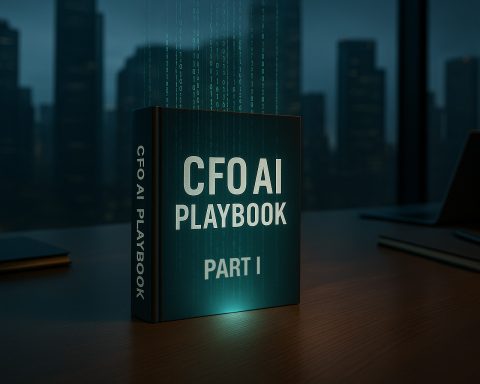Taxation is a multi-faceted process that is influenced by economic, government, social and environmental factors. This article provides a perspective of where we are and what we can potentially expect over the coming year.
There is much to be resolved in 2025 with the Inflation Reduction Act (IRA), the Tax Cuts and Job Act (TCJA) which is due to expire and the temporary tax provision, “Tax Extenders”.
Let’s start with the Tax Cuts and Jobs Act (TCJA). What’s Expiring and Why?
There were parts of the TCJA that were intended to be permanent (like the cut to the corporate tax rate and the repeal of the corporate alternative minimum tax), but much of the Tax Cuts and Jobs Act is, transitional.
- Initially, the first thing that happened in terms of TCJA expirations were a set of three important shifts that took place in 2022 and preceded the full scale sunset at the end of the year: (1) business interest deductions were limited to 30% of earnings before interest and taxes – depreciation and amortization were no longer permitted to be included in the calculation, (2) domestic R&D expenditures had to be amortized over five years and foreign R&D expenditures had to be amortized over fifteen years (previously, the costs were able to be expensed) and (3) full capital investment expensing began to phase out by 20 percentage points annually. Currently, 40% of the cost of capital investment can be expensed.
- Next, there is the sunset at the end of 2025 which entails (1) capital expense phase out, (2) the rate of the global intangible low-taxed income tax and foreign-derived intangible income tax both rise from 13.125% to 16.406%, (3) the rate of the base erosion and anti-abuse tax will rise from 10% to 12.5%, (4) the individual income tax rates will return to pre-change levels; from 10%, 12%, 22%, 24%, 32%, 35% and 37% to 10%, 15%, 25%, 28%, 33%, 35% and 39.6%, (5) the standard deduction will fall from $29,200 for married couples to about half of that amount, (6) the mortgage interest deduction increases to $1 million from $750,000, (7) the state and local tax deduction cap disappears, (8) the 20% partnership tax deduction disappears, (9) the child tax credit falls from $2000 to $1000, (10) the charitable deduction cap falls from 60% of AGI to 50% of AGI, (11) the individual AMT phase-out will return and (12) the estate and gift tax exemption falls from about $30 million to about $6.5 million.
Let’s assume that the TCJA is extended on a budget neutral basis. How could this be done? There are several choices:
- Create new revenue by raising taxes or creating new taxes
- Eliminate tax credits or deductions
- Scale back their tax cut plans
- Redefine budget neutrality
- All of the above
The likely choice is all of the above.
Most of the discussion about the TCJA thus far has centered on cutting tax expenditures. At the center of that discussion are the clean energy tax credits in the Inflation Reduction Act. Why? Because the clean energy credits in the IRA are expensive.
The IRA was originally estimated to bring in $325 billion in revenue, and that includes the clean energy tax credits which were estimated to cost around 350-370 billion when the IRA was scored by the Congressional Budget Office in the summer of 2022. However, the Penn Wharton Budget Model estimated that by the end of April 2023, that cost of the Inflation Reduction Act had ballooned to $1.045 trillion. When the government issued its annual estimate of tax expenditures in March 2024, that report seemed to substantiate what Wharton had estimated.
However, rather than a repeal of the entire IRA bill, small rollbacks of clean energy perks here and there and the repeal of minor clean energy tax perks, like the one for clean hydrogen, make more sense.
Outside of raising taxes and cutting tax expenditure, there are also three options for scaling back
- Don’t make it permanent, just extend it by a few years (and then you can extend the entire TCJA at a fraction of the cost of making it permanent),
- Pick and choose which provisions you want to make permanent
- Scrap the rest or make some of it permanent and extend other portions of it temporarily.
The event of a Senate filibuster can make things complicated. The filibuster is the mechanism in the Senate that allows the party in the minority to hold up Senate business perpetually in order to block a single bill. Because the controlling party doesn’t have at least 60 seats in the Senate, bipartisanship is required to pass a bill, unless the bill is specifically related to the budget, then you can, in fact, adopt something by a majority vote, but you have to use an awkward legislative mechanism called “budget reconciliation”.
Budgets that are passed under a reconciliation procedure need to be budget neutral; that is, they can’t increase the deficit. The more that you add into a bill, the harder it is to make it budget neutral. So, if the cost to make the Tax Cuts and Jobs Act permanent is between 4.5 trillion to 6 trillion, then Congress has to figure out how to come up with 4.5 to 6 trillion dollars to ensure that the TCJA tax cuts are offset.
Reconciliation requires that every provision in a bill passed must have a direct impact on the budget. But it’s not entirely clear what that means. Whenever the Senate wants to try something that has never been tried before, the Senate parliamentarian has to decide whether it relates to the budget or not. What does budget neutral mean? Interestingly, that’s up for debate in three ways:
- The first is that under reconciliation, your tax cuts have to be paid for, but not immediately. In the past, Congress has said that a budget has to be neutral within 10 years, but that’s not mandatory. It can be 20 years or 50 years, etc.
- The second way that budget neutrality may be redefined, is derived from where you begin – where you locate the starting point. If we assume that the Tax Cuts and Jobs Act is the aberration and the budgetary state before the TCJA is baseline, and if it costs $6 billion to make the TCJA permanent, you have to come up with $6 billion to make that happen. However, if you assume that the aberrant budgetary period was before the Tax Cuts and Jobs Act and that baseline is, in fact, the TCJA, then budget neutrality can only be achieved by making it permanent.
- The third factor is that there’s both a fixed and a variable method of determining how much the TCJA may cost. In other words, if you look purely at the amount of lost revenue that comes from a 20% partnership tax cut, that’s a fixed valuation of the cost. However, you can also consider the economic growth produced by the partnership tax cut. If the partnership reinvests that lost revenue over the budget window and thereby produces more taxable income, then the amount of tax revenue collected is greater than it would have been without the partnership tax deduction – that’s the variable method.
There are other items on the table, which include:
- Exempt overtime from taxes
- End the taxation of social security benefits
- Exempt tip income from taxes
- Lower the corporate tax rate to 15% for domestic manufacturing
- Let the $10K cap on the SALT deduction expire
- Allow a deduction for interest on loans for cars built in the US
- Eliminate double tax for Americans abroad
- Exclude income of firefighters, police officers, military personnel, and veterans from tax
- Increase the child tax credit to $5,000 per child
We only have estimates for some of these proposals. That being said, I think Congress will try to adopt some of these proposals.
Lastly, the final piece of the puzzle is tax extenders. The 2024 federal budget technically ran out on September 30th, 2024. It was extended until December 20th and then extended again until March 14, 2025. With a shift in control in both houses of Congress and the presidency, it’s likely that a 2025 budget will eventually be agreed too. However, it is also not impossible that an agreement may not be reached.
It’s possible that we may see some elements of the TCJA extension in the 2025 budget, like permanent expensing, and the R&D and interest expense fixes. We may even see something like the US-Taiwan tax treaty language in the 2025 budget, essentially adopting a tax compromise. For example, striping out the child tax credit provision and the low-income housing allowance and breaking up the TCJA into two separate bills.
Conclusion
The complex tax landscape continues to evolve. There are no shortage of tax bills and considerations to be resolved. The end result remains to be seen with respect to the TCJA and IRA and what mechanism or choices will be applied. Staying informed about updates, regulation and ever-changing economic, government, social and environmental factors, is critical to employing the right tax strategies.

























